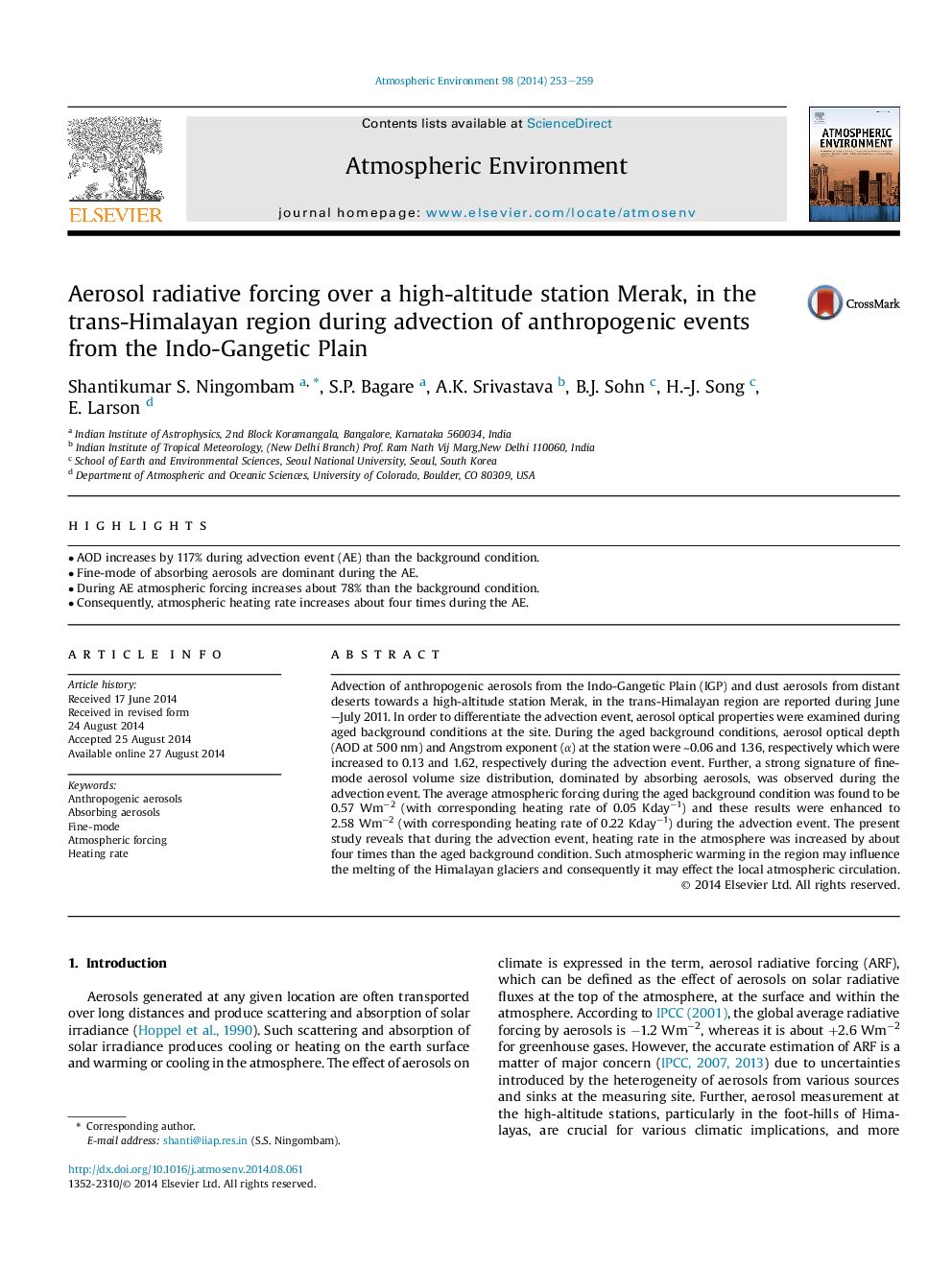| Article ID | Journal | Published Year | Pages | File Type |
|---|---|---|---|---|
| 6338940 | Atmospheric Environment | 2014 | 7 Pages |
Abstract
Advection of anthropogenic aerosols from the Indo-Gangetic Plain (IGP) and dust aerosols from distant deserts towards a high-altitude station Merak, in the trans-Himalayan region are reported during June-July 2011. In order to differentiate the advection event, aerosol optical properties were examined during aged background conditions at the site. During the aged background conditions, aerosol optical depth (AOD at 500 nm) and Angstrom exponent (α) at the station were â¼0.06 and 1.36, respectively which were increased to 0.13 and 1.62, respectively during the advection event. Further, a strong signature of fine-mode aerosol volume size distribution, dominated by absorbing aerosols, was observed during the advection event. The average atmospheric forcing during the aged background condition was found to be 0.57 Wmâ2 (with corresponding heating rate of 0.05 Kdayâ1) and these results were enhanced to 2.58 Wmâ2 (with corresponding heating rate of 0.22 Kdayâ1) during the advection event. The present study reveals that during the advection event, heating rate in the atmosphere was increased by about four times than the aged background condition. Such atmospheric warming in the region may influence the melting of the Himalayan glaciers and consequently it may effect the local atmospheric circulation.
Related Topics
Physical Sciences and Engineering
Earth and Planetary Sciences
Atmospheric Science
Authors
Shantikumar S. Ningombam, S.P. Bagare, A.K. Srivastava, B.J. Sohn, H.-J. Song, E. Larson,
